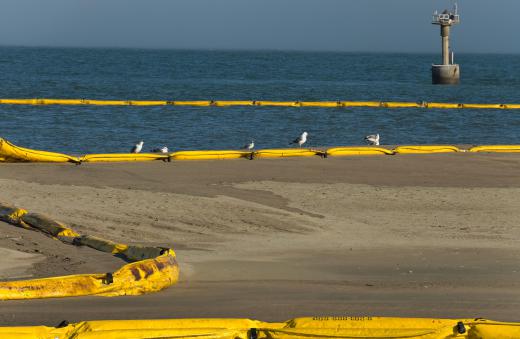Spill response" is the term used to describe the activity that takes place after some type of spillage of toxic or hazardous materials has occurred. The type of response will vary, based on the nature of the chemicals or other materials involved, the degree of negative impact the materials may have on people, animals and the environment in the immediate area, and the availability of resources to deal with the spill. Typically, companies as well as municipalities and government agencies will be involved in any type of emergency spill response that involves materials that are considered highly threatening, while municipalities and private cleaning companies may deal with issues such as a sewage spill.
With just about any type of spill response, two specific goals are included. The first step is usually to contain the spill, preventing the materials from spreading contamination as much as possible. To this end, the area around the spill is usually quarantined in some manner, with only people who are engaged in the cleanup effort allowed to enter that space. Once the area is quarantined, equipment is brought in to prevent the spread of the spill, using whatever means necessary. This may include erecting some type of barrier even as efforts are made to seal whatever breach caused the spillage to take place.

Once the spillage is contained, the next step in the process is to begin the cleanup process. Depending on the nature of the spillage, this phase of the spill response may involve capturing the materials in some type of containment units and transporting the spill to another area for release or treatment. At other times, the spillage may be coated or covered with materials that are capable of absorbing the spilled materials quickly before there is any further risk of contamination. Once the hazardous liquid is fully absorbed, the removal materials are transported from the area and additional cleaning to remove any trace amounts is initiated. When successful, the spillage has little to no effect on the surrounding area and does not cause any type of illness or injury to humans or wildlife in the immediate area.

Many governments have detailed spill response plans in place, and also require companies that deal in hazardous chemicals, waste products, and other dangerous materials to develop spill response plans that can be engaged immediately if necessary. Water treatment plans, chemical manufacturing plants, and even trucking firms that transport oil and chemical products from one location to another are all likely to operate with a government approved spill response plan and routinely upgrade their spill kits to allow for the most effective response in the event that a spill should take place.

